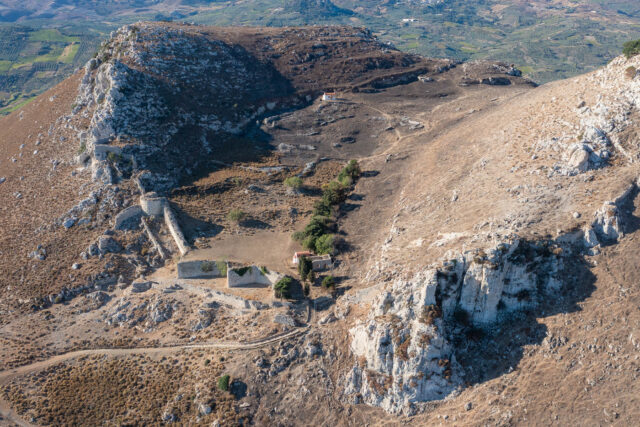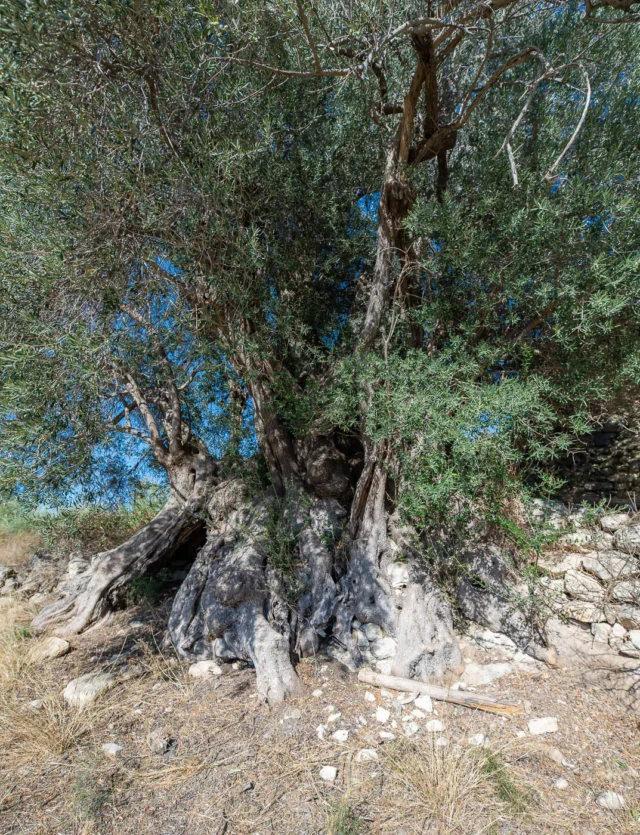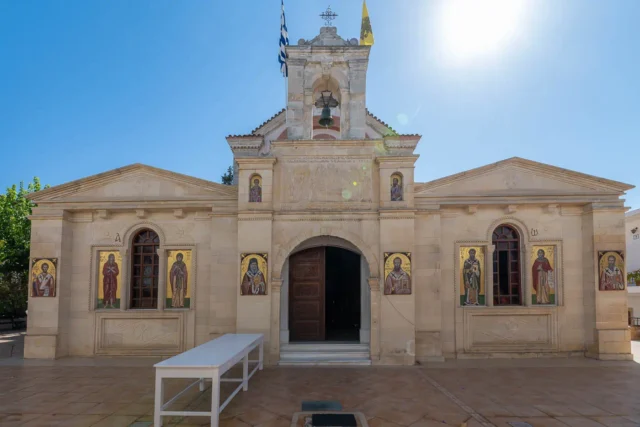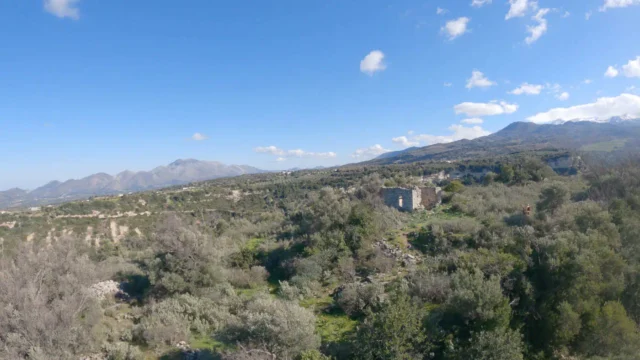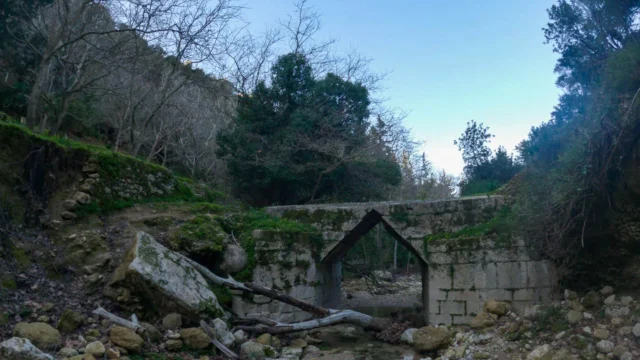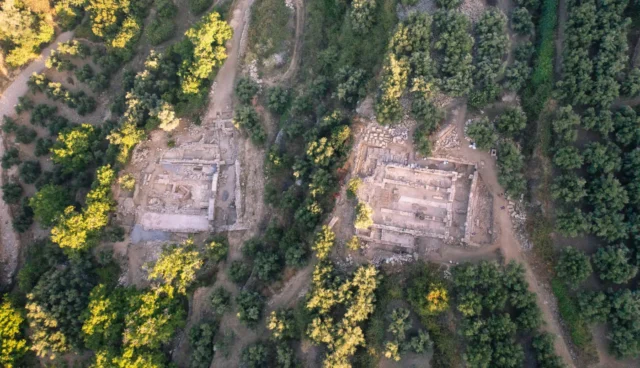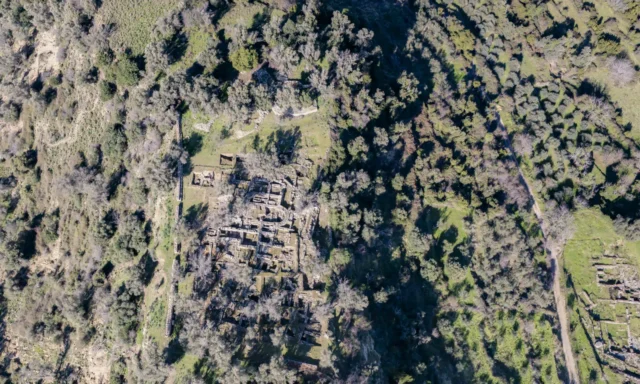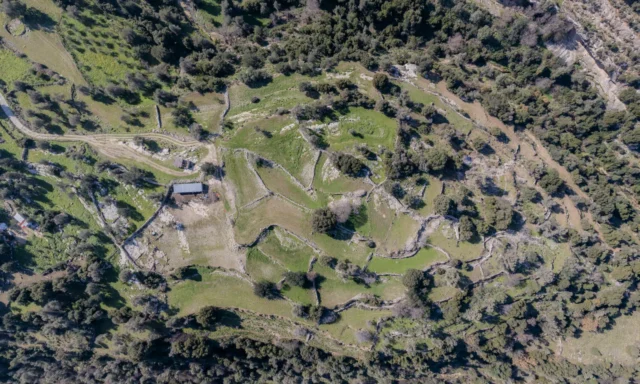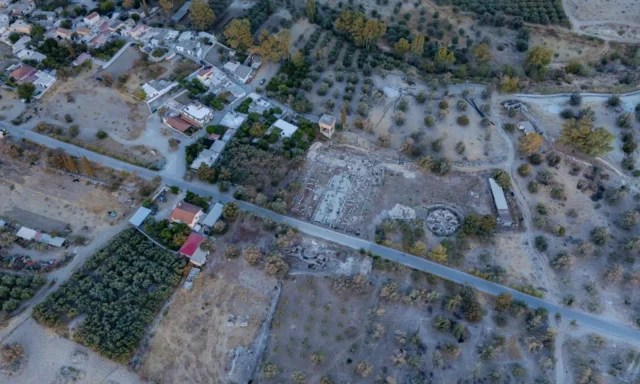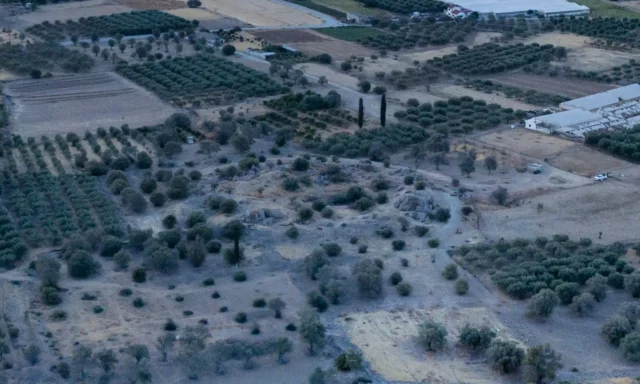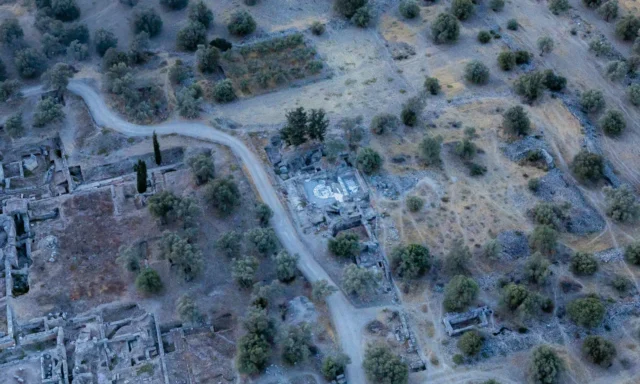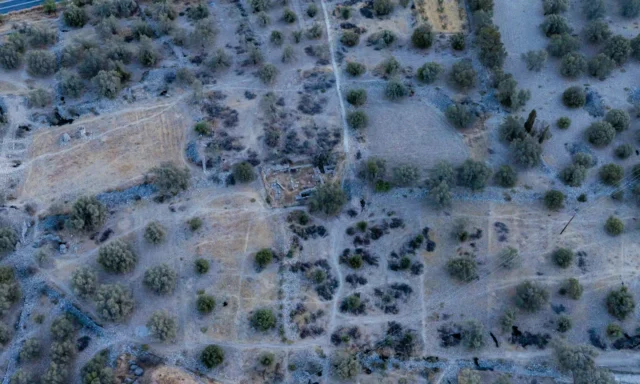829
listings found
Categories
Active filters:
Temenos Fortress
Located on Rocca hill near Profitis Ilias, this is Crete's most important Byzantine fortification, built in 961 CE by Nikephoros Phokas. Also known as Rocca or Kanli Kastelli, its history involves the Genoese, Venetians, and Ottomans. Its Turkish name, "blood-soaked castle," stems from a 17th-century massacre. The 60-hectare archaeological site, near the site of Ancient Lycastos, includes ruins of walls, a pentagonal inner fortress, large water cisterns, and several churches.
The Monastery of Agios Georgios Epanosifis
Agios Georgios Epanosifis Monastery: A historic monastery near Heraklion, Crete. A monastery with rich history and spiritual significance.
Agia Eirini Monastery, Kroussonas
Situated at an altitude of 650 meters in the eastern foothills of Psiloritis, near Kroussonas, this nunnery has a history documented since the Venetian era (1589). The two-aisled church is dedicated to Agia Eirini and the Dormition of the Theotokos. During Ottoman rule, it served as an educational center and a refuge for rebels. The monastery was destroyed by the Turks in 1822, an event marked by the slaughter of its nuns. It was revived in 1944 and is now one of Crete's largest nunneries.
Kokkini Ammos beach
Crete’s Captivating Red Beach Kokkini Ammos, or Red Beach, is situated 68 kilometers southwest of Heraklion and a mere 800 meters south of the renowned Matala, in the Moudia region. […]
The Ancient Olive Tree of Ano Tripodo
The 2,600-year-old monumental olive tree in Ano Tripodo, Crete. A testament to time and nature's resilience.
The Monastery of Panagia Kalyviani
Monastery of Panagia Kalyviani: A spiritual and charitable center in Crete, known for its social work and Byzantine architecture.
The Megali Porta Thermae at Gortyn
A vast Roman bath complex located at the southern boundary of Gortyn, covering 3,600 square meters. Constructed in the Hadrianic or Antonine period (2nd century CE), it was a major public facility connected to the city's aqueduct system. The site also featured two twin temple buildings. In the 6th and 7th centuries CE, parts of the complex were reused for residential dwellings and workshops. A Christian basilica was later built in the area, utilizing a nearby desecrated sanctuary.
Agia Anna Church in Ancient Eleutherna
The Agia Anna basilica in Eleutherna offers insights into the city's transformation into a Christian center. Learn about its location, history, and significance.
Agia Eirini and Agios Markos in Eleutherna
Agia Eirini and Agios Markos are two archaeological sites in Eleutherna, Crete, featuring Early Christian basilicas.
The Acropolis of Eleutherna
The acropolis of Eleutherna, located on Prines hill, offers a glimpse into the city's history from the Bronze Age to the Early Byzantine period.
The Orthi Petra Necropolis at Eleutherna
Orthi Petra Necropolis in Eleutherna reveals Early Iron Age burial practices and social structures through diverse burial types and rich grave goods.
Katsivelos in Eleutherna
The Katsivelos archaeological site, located on a strategic hill near Eleutherna, Crete, shows continuous human activity from the Final Neolithic/Early Minoan II (c. 3000 BCE) through the Geometric period (c. 700 BCE). Excavations by the University of Crete revealed a settlement history starting with simple FN/EM II structures. The Middle Minoan period shows increased complexity with larger buildings, while the Late Minoan period suggests a decline in scale. The final Geometric phase indicates a small, scattered settlement before its abandonment.
The Hellenistic Settlement at Nisi, Eleutherna
The Hellenistic settlement at Nisi excavations has revealed houses, pottery kilns, and streets that show a focus on pottery production and trade.
Episcopal Basilica of Gortyn
The Episcopal Basilica of Gortyn in Crete was a major religious center during the Early Byzantine period. It features mosaic floors and marble elements.
The Amphitheater at Gortyn
The Amphitheater at Gortyn, a colossal Roman structure that once hosted gladiatorial combats and other spectacles and it transformed into an early Christian cemetery.
The South Baths near the Praetorium at Gortyn
Originally a gymnasium from the Augustan-Tiberian period, this complex was transformed into expansive public baths under Emperor Trajan in the 1st century CE. Located near the Praetorium, it served the Roman elite as a social and administrative hub. The facility included a caldarium, tepidarium, frigidarium, and palaestra, supplied by a robust aqueduct. The baths reflect Roman bathing culture and represent the empire's influence in Crete, remaining in use through the Early Byzantine period.
The Sanctuary of the Egyptian Gods at Gortyn
The Sanctuary of the Egyptian Gods at Gortyn, a testament to the diverse religious landscape of Roman Crete.
The Agora, Odeon, and the Great Code of Gortyn
The Agora, Odeon, and the Gortyn Law Code in Gortyna, Crete. Discover the heart of the ancient city's civic and legal life and its significance in Greek history.
The Basilica of Saint Titus in Gortyna
The Basilica of Agios Titos in Gortyna, a 5th-century structure rebuilt in the 6th and 7th centuries, reflects the city's transition from paganism to Christianity.









